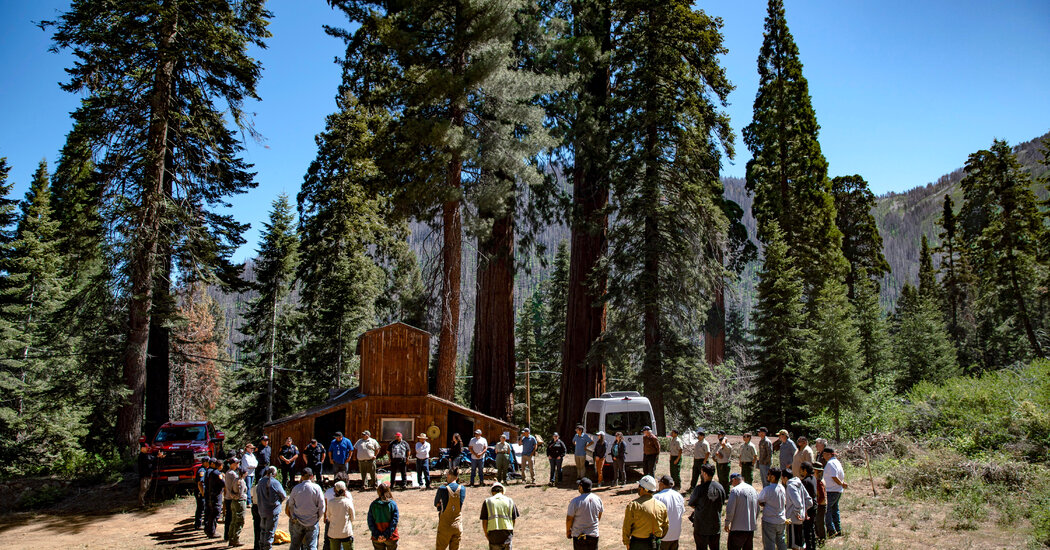Beneath a cerulean sky and a forest of the largest trees on Earth, the chairman of the Tübatulabal Tribe, Robert Gomez, offered a prayer. “I want to tell the spirit on the other side of the sun to give us power for this burn,” he said. “Give us a good burn.”
After songs, prayers and pronouncements, several dozen members of the Tule River, North Fork Mono and Tübatulabal Tribes and others kindled branches into crackling fires. Thick clouds of blue smoke billowed through the canopy of the giant sequoia forest. A plate of food from a barbecue was offered to the flames.
The carefully monitored fire at the Alder Creek Grove in California was aimed at clearing the forest of growth in the understory and, among other things, at helping to prevent out-of-control wildfires.
And it also was only the second “cultural burn” held by these tribes outside their reservations in more than a century. Indigenous people had been barred from conducting ritual, controlled fires in the forest under a 19th-century law that deemed the blazes destructive. But in 2022, in response to some of the most extreme wildfires in California’s history that occurred in 2020 and 2021, the law was reversed.
“As a result of the humongous fires, the narrative really changed in Sacramento,” said Matthew Tuttle, chief of staff for Assembly member Devon Mathis, who attended the burn. “They were more open to talking about forest management and what the tribes were saying.”
The tribes have long seen the sequoias as more than trees. “They are our ancestors,” said Kenneth McDarment, a Tule River Tribe council member.
